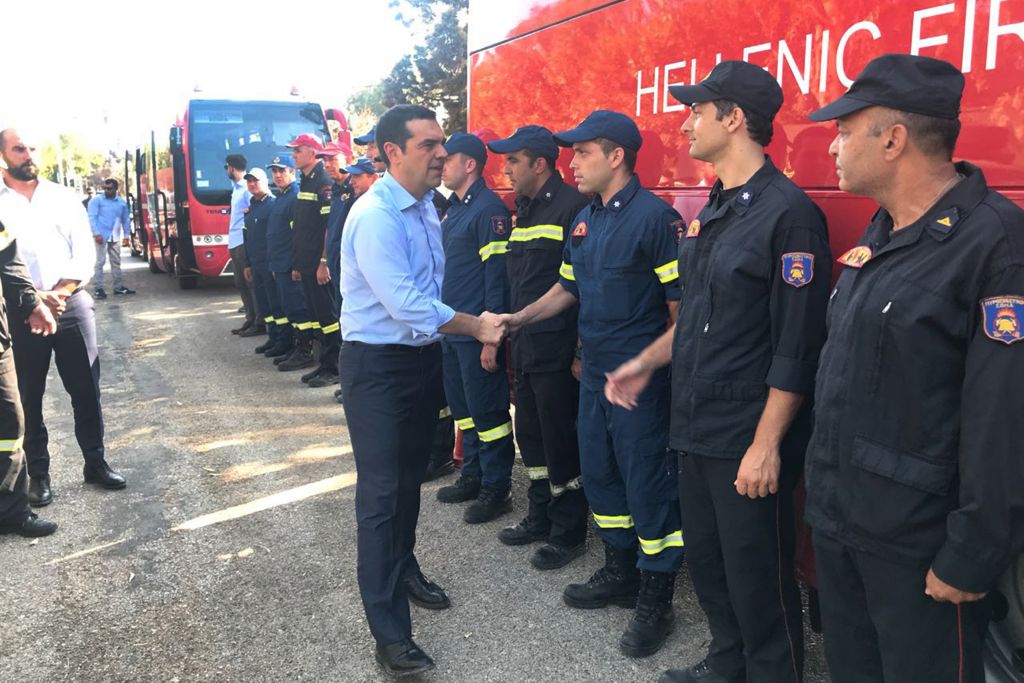It had all the characteristics of a controlled and staged inspection. Alexis Tsipras’ 30 July visit to the fire-stricken regions triggered a major backlash over the manner, the place, and the time that it occurred.
The PM’s decision to arrive in the ravaged area at 8:20am, when people were not around, was harshly criticised, and he has received ever stauncher criticism since the tragedy occurred.
For Mr. Tsipras and his staff, yesterday’s visit to Mati, even in a controlled environment, was considered a mandatory move, in the framework of the communications and political management over the last few days, aiming to improve the PM’s image.
However, yesterday’s visit was denounced by the entire opposition, which spoke of a communication show of the prime minister. It was seen as a visit that was well prepared, so that the PM would not come into contact with local residents, for fear of denunciations or even incidents.
Main opposition divs referred to the visit as “sterile”and staged by the PM’s office, so that Tsipras would be in an absolutely controlled environment.
The government, clearly pressured and wounded in a variety of ways, both in terms of communications and politically, is seeking a way out of the difficult position in which it finds itself.
\
Yesterday’s visit, after the harsh criticism of Tsipras, who was described as “invisible” by Reuters, was the only choice for the government, albeit belated.
These views are obviously not shared by the PM’s office, and government spokesman Dimitrsi Tzanakopoulos told yesterday’s press briefing that, “If the PM had chosen to visit accompanied by cameras, you would have accused us of a communications management of the situation.”
Top opposition politicians say that the PM in his “secret” early morning visit to Mati traveled with eleven accompanying cars and two motorcycles. The photographer of the prime minister’s office was also present.
Tsipras visited the area with none of the ministers who are implicated in the tragedy. He was accompanied only by the government spokesman, the director of his office (Yanna Pepe), and his security detail.
The PM stayed in the area for about an hour, and the visit was announced only after he had returned to his office.
He visited the Argyri Akti (silver coast), the creek at Kokkino Limanaki, and the Coordinating Centre of the Fire Service and the Army, on Olympos Avenue.
He spoke to and thanked infrastructure ministry engineers, soldiers and firefighters. He was briefed by Fire Service deputy chief Anagnostakis.
There was no contact with residents of the area, except for a brief exchange with one resident, who was told about the government’s reconstruction plans.
Aris Ravanos
